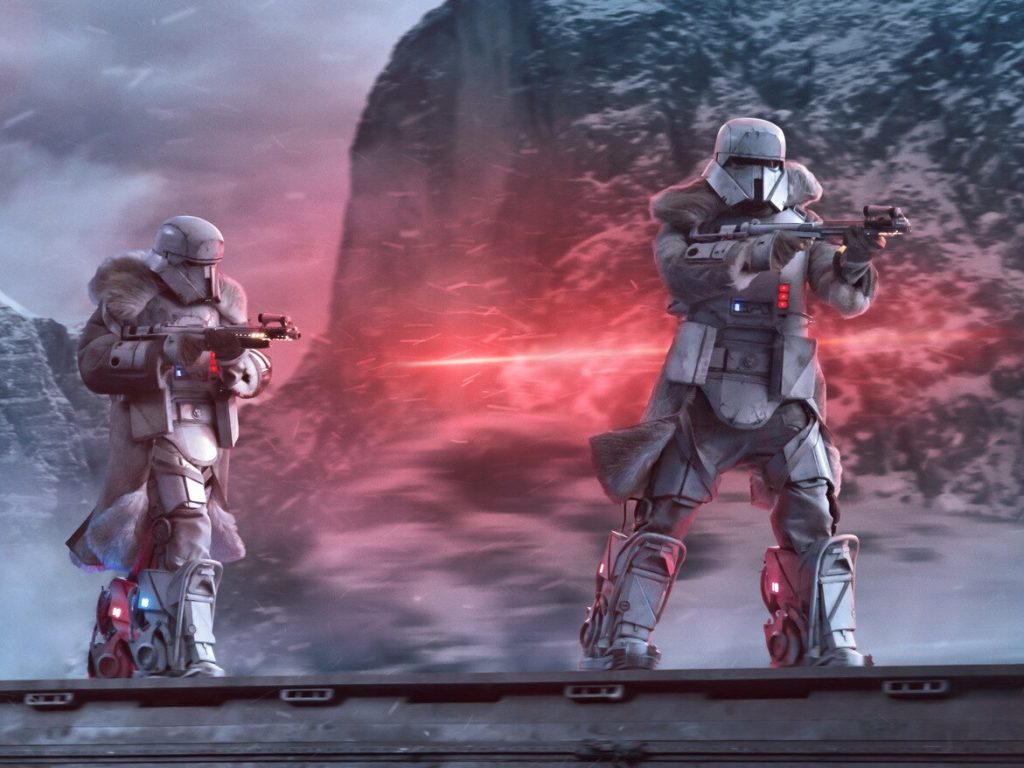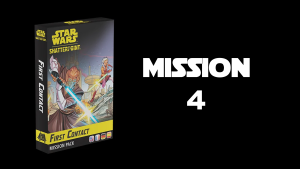This article will be a unit guide for the Range Troopers Support unit in Star Wars: Legion.
Range Troopers are the elite frontier troopers of the Empire, manning posts in harsh environments with their luxurious fur lined armor and built-in grippy boots. These are the infamous “dudes on the train” from the Solo movie.
Anyway, somehow this translates to another relatively static Range 4 unit for Empire, which is both sort of boring and also very useful.
Range Troopers

Let’s start, as usual, with some strengths and weaknesses:
Strengths
- Extremely good long range firepower
- High resistance to plink damage
- Occupy less crowded support slot (instead of Special Forces)
- Free aims for doing the thing you want to do anyway
- High courage and Indomitable
- Cost-efficient
Weaknesses
- Attack pool wants surges
- Attrition significantly weakens their attack pool
- Needs support to maximize potential
60 Points. The naked unit is not much to look at for this price, but it’s downright reasonable once you add in their potent heavy weapon upgrades.
Defense: Red save, 1 health/model, Armor 1. The red save with 1 health per mini is standard fare for Empire trooper units; Armor 1 is great and makes them really hardy against snipers, one of the few things that would otherwise consistently threaten them at their engagement range of 4.
Offense: Black, no surge, Range 4. This is a solid foundation for both of their heavy weapon upgrades; units that natively engage at Range 4 are extremely rare (and mostly confined to Empire already). Their melee is also oddly potent (though swingy) with their double whites. They don’t want to be in melee, though.
Courage 2, Indomitable: This is an incredible combination. These guys compare to Wookiees in their ability to shrug off suppression. This also significantly reduces the downside of Spur.
Spur: Speaking of… yeah, they are Speed 1, but they can easily become Speed 2. They get to give themselves suppression cover as well just sort of at will when moving, which is nearly free due to their suppression shedding as above. Combined with their Armor 1 this is practically just a pure benefit rather than some kind of cost/benefit decision like Spur would be otherwise.
Advanced Targeting, Trooper 1: When I first saw this keyword I thought it would be more specific to a unit type, rather than just applying to the most common, generic unit type in the game… but that makes it super useful I suppose. Basically, you get a free aim token when attacking, unless you are shooting vehicles. Notably this procs on each attack (like Hunter), so unlike things like Target or Independent, you can get extra uses out of this from abilities like Pull the Strings or Deploy the Garrison that potentially give you an extra out of sequence attack. Note that you can’t split fire and still get the aim from Advanced Targeting.
Slots: Heavy, Personnel, Grenade, Comms. The Heavy and Personnel slots are both great, as with any trooper unit, though the personnel slot is limited to just a generic trooper upgrade, which has unfortunately been a trend with the recent releases that have personnel slots. The grenade slot is pretty useless on a long range unit like this one. The comms slot doesn’t have any clear strong options either. What they really want is a gear slot for scopes or recon or a training slot for any number of things, but they don’t have those, sadly.
Upgrades
Before we get into tactics and list ideas, lets take a look at upgrades. I’m not going to look at Grenades here, because this is not an assault unit and there isn’t really a reason to take them.

Heavy Weapons
DLT-20A Range Trooper
This is the anti-armor option between the two heavies, with native Impact 2 and two red dice. This makes your total pool 4 Black, 2 Red, which is an average of 3.5 hits before aims and/or surges. That isn’t great in terms of raw numbers (1.5 past cover most of the time) but remember that 1) they get a free aim most of the time, and 2) this is at Range 4, where more units can’t shoot at all or at best can only plink. The extra aim adds roughly an extra hit to the pool, which starts to look pretty good, even past cover.
The Impact here is a bit of a nonbo as it likely means you are forgoing the free aim (unless you are shooting Dark Troopers or something) but it’s a relatively cheap Impact option (in a meta that features a lot of aggressive armor skews) with no exhaust/cumbersome at good range that also just normally has good dice against all targets. The biggest sacrifice you’re making here relative to the T-21A is the Suppressive keyword and the higher raw dice count. Aside from the higher likelihood to get a crit with the T-21A the average hits are actually the same (2 red vs. 2 black 2 white is statistically the same on average) though you will start to feel the impact of casualties sooner with the DLT-20A due to the lower dice count.
T-21A Range Trooper
The T-21A comes with the Suppressive keyword and really allows you to stack a ton of suppression when coupled with some of the other (numerous) Suppressive weapons that Empire can field. Range 4 Suppressive weapons are pretty rare and usually don’t have great dice (or exhaust in the case of Death Troopers) so this is a steal for what you are paying. The dice can feel swingy without surge token access, but you should be able to stack some serious aims here between Advanced Targeting, Spotter, and the good ole fashioned Aim action.
The T-21A is slightly more expensive than its anti-armor counterpart. Make sure you have a plan to deal with armor skews if you are running the T-21A over the DLT-20A.
Personnel
The extra generic dude offers no special keywords or anything (a sad regression from the SC release that featured generics that actually did things) but is nonetheless a useful upgrade at 15 points. Padding your dice pool with an extra black die and insulating your heavy behind another wound is pretty good value, if you have the points lying around.
Sadly they can’t take any other personnel upgrades.
Comms
There aren’t a lot of great options here for Range Troopers as most comms upgrades are pretty situational, though there is consideration for one.
Emergency Transponder

If you have extra points lying around, you could do worse than this for an on-demand extra aim token. Hopefully you are already managing your aim needs through your free Advanced Targeting aim, Spotter, and just Aiming, but this could be good in a pinch where you need to move/shoot early in a turn and you don’t have the action to aim and/or tempo doesn’t allow you to get a Spotter aim.
Tactics – How to Gunline
This is a Range 4 unit with little in its kit that does much besides attack things from range, so we’re going to look at some gunline basics. I’m just going to hit the highlights here, if you want a much more in depth look at this topic (and how to win the attrition fight in general), Evan Paul wrote a great article on “Winning the Fight.”
Playing a ranged unit (whether you entire list is a gunline or not) requires a few basic fundamentals:
- Range Awareness
- Mutual Threat Bubbles
- Target Priority
Let’s break each of these down briefly.
Range Awareness
Basically this comes down to understanding each unit’s (both yours and your opponent’s) “threat range.” A threat range is the range at which a unit can make an attack that you care about; usually a single move plus that attack’s range, though this can be extended through abilities that give free moves (Speeder) or free attacks (Steady, Relentless, etc.) as well as “out of sequence” abilities that can move units like command cards or Guidance/Pull the Strings. Note I specified an attack that you “care about;” this is going to require your own assessment and can change based on game state. Maybe your armor 1 Range Troopers aren’t normally troubled by normal sniper shots, but they’ll want to be more wary of attacks that combine Critical and Pierce, like the new Clone Commandos.
Being aware of threat ranges allows you to assess the cost of making an attack, which is often going to entail getting attacked in return. Make sure making that ranged attack helps improve your chance to win the game (moving the ball forward) more than it detracts from it.
That leads into #2:
Mutual Threat Bubbles
Basically this comes down to, “if I move here and/or make this attack, how many units can attack me back, and then how many of my own units can I respond with?” I’m stealing this helpful graphic from my colleague Evan’s article that I linked above:

Generally speaking, you want to keep your units closer together so they can mutually retaliate, unless you have a good reason to spread out. “Lateral” movement, or moving sideways relative to your opponent’s army, has lost a lot of value since center to center cover was removed, but still be aware if you can get out of cover shots this way. It is a lot less common but not completely unheard of, and it’s still worth looking for those. Still don’t unnecessarily expose a unit to take such shots, though.
Target Priority
When making ranged attacks, you need a good sense of what is most valuable to shoot. Sometimes this choice is made for you, if you only have one or a few targets. Once you are “engaged” though and trading shots consistently, this is less obvious.
Generally, you want to prioritize unit kills (unit’s that you can reasonably remove with the attack in question), followed by un-activated units you can reduce the threat level of by shooting, followed by activated units you can reduce the threat level of by shooting, followed by units whose threat level won’t be reduced if you shoot them (like a full health vehicle you can’t kill in one shot).
Basically, you need to assess the likely impact of each shot and which one is most valuable. Objectives can also change this calculus; sometimes suppressing a key unit so it can’t reach an objective is more useful towards winning the game than killing or damaging a unit that won’t be scoring.
List Ideas
There will be a couple of common themes for all these lists: Guardian support (via IRG) and aim support (via Spotter).
Range Troopers With Inquisitors

Maybe Range Troopers can provide the shell that Inquisitors have been searching for. The Range Troopers force your opponent to close while the Inquisitors are around to engage when they do. This list features both IRG and a medic for some extra beef.
You Want some Suppression with that Suppression?

This list generates 14(!) Suppression per turn at Range 4. Need I say more?
If you want to fit a medic you can swap Veers down to a generic officer, but I like Veers here; he’s a little more durable, he throws an extra aim out, and his gun doesn’t suck. Maximum Firepower is also still a pretty useful card and this list is sort of wanting for decent one pips.
Palpatine

What else besides Range Troopers want IRG? That’s right, the Emperor himself. Pull the Strings also gives you another chance to proc Advanced Targeting (since it’s per attack). Plus, once your opponent is weary of all the Ranged Trooper shots, you can give them the Jazz Hands.
Aggressive Tactics provides a way to give the Range Troopers those sweet surge tokens.
Krennic

And finally, another variant on the long range suppression theme. Though you don’t have Spotter here for aim access, you do have Aggressive Tactics with a solid plan to get faceups to your Range Troopers with reasonable frequency (between command cards and the relayed Entourage order). Gideon also gives you the option to give your Shores their own precious face-ups, free aims, and surge tokens. You can do a reasonable impression of a droid list with all the free face-ups you’ll be getting here.
Summary
Range Troopers are an intriguing new long range unit to add to Empire’s existing arsenal of…intriguing long range units. Slot them into your lists and pile even more long range fire on; and go cook some beans around a fire, or whatever space cowboy stormtroopers do.





